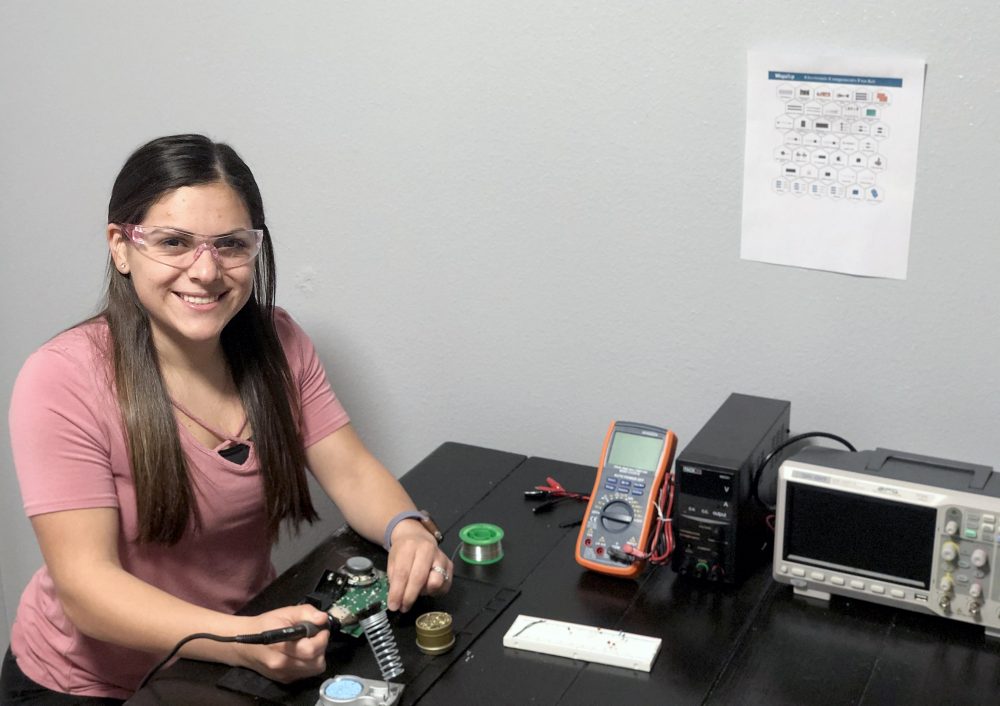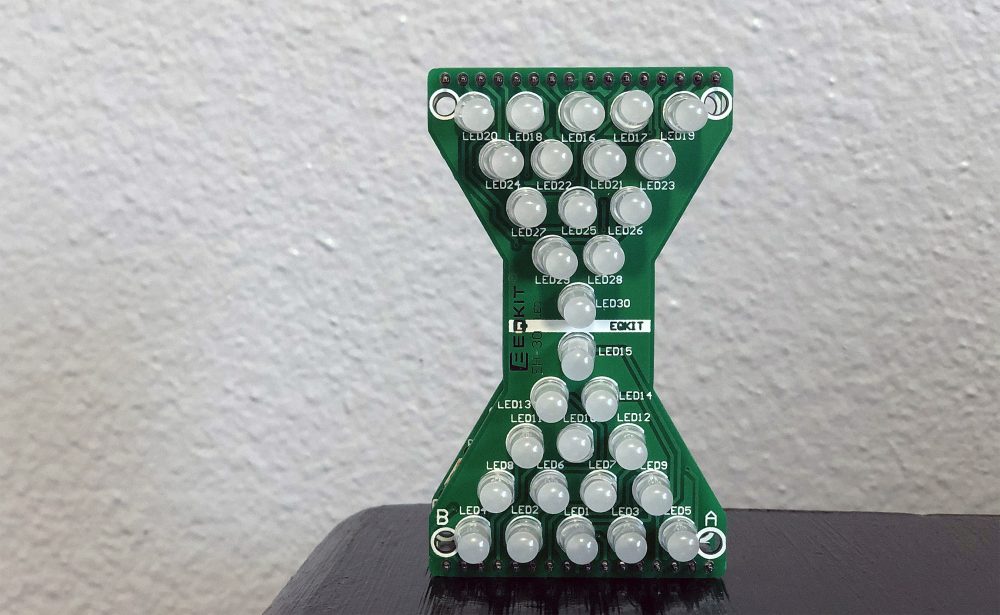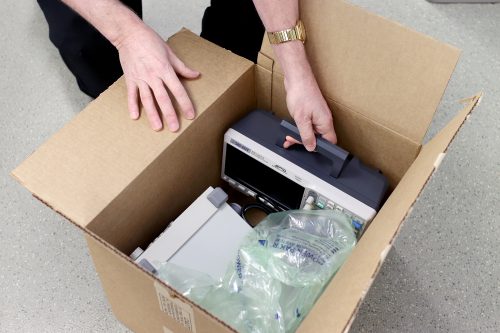This content was published: April 19, 2021. Phone numbers, email addresses, and other information may have changed.
PCC brings the engineering classroom to the homes of students
Photos and Story by James Hill

Lina Ruvalcaba plans to use her EET training to work in the healthcare industry and said it has been invaluable having home kits to reach her goals.
Sometimes adversity breeds innovation.
That’s exactly what Portland Community College’s Electronic Engineering Technology Program (EET) did in 2020 when classes were forced to go online as a result of the COVID-19 pandemic. As the entire college shifted learning to remote and online platforms, the program didn’t stay idle and hope its students would survive. Instead, faculty proactively secured more than $71,000 in Carl D. Perkins grant funding, which has helped purchase 110 home kits for students to do lab work and maintain hands-on skills.
Community colleges all over the country have tackled the pandemic with innovation and PCC is no exception. These kits include some of the program’s most-used equipment like the oscilloscope, function generator and digital multimeters, as well as power supplies. Students were only required to buy small and inexpensive items such as five-second timers, jumper wires, LEDs, resistors, capacitors and toggle buttons to continue their work and complement the kits.

Electronic Engineering Technology
PCC’s program offers a wide array of courses, industry affiliations and resources that enable students to begin and sustain a career in electronic engineering. Thanks to expert faculty and dedicated support staff, EET provides the courses and resources for students to gain the skills and experience required to start a job in the field or upgrade skills.
“Our students have enjoyed working on their projects from home,” said EET faculty chair and project lead Sanda Williams, who added that the effort has opened up the possibility of hybrid classes and online cohorts. “This increased their skills and confidence. We were able to buy test equipment for each student for this past winter term and plan to accommodate more students for spring and summer terms until we are back on the campus.”
The home kit idea was the brainchild of Williams when her students started dropping classes as a result of PCC transitioning to online or remote classes. Despite some early doubts about whether such a project could work, students embraced the concept wholeheartedly and used the equipment responsibly, as well as returned the kits when they were done.
PCC’s EET Program provides an important pipeline of workers for the local industry. Her program produces graduates for firms like Intel, Biotronik, OHSU, Sunset Solar and Cascade Microtech, to name a few. Many of PCC’s graduates have achieved upper-level positions as engineering managers and quality control technicians as result of the training.
One of the current students is Lina Ruvalcaba, who plans to work in the healthcare industry. She said it has been invaluable having the kits at home to continue her training and has allowed her to stay on the path toward earning an Associate of Applied Science Degree with a Biomedical Engineering Technology Option.
“During the last couple of terms we have used a lot of new equipment and learned so much about the components and tools,” said Ruvalcaba, who works part-time to put herself through college. “Remote learning has been a challenge and a learning curve for all of us, but I appreciate that Portland Community College was able to find a way to make not ideal circumstances work out for their students. Even though working remotely has its challenges, it’s been great to have the instructors on your side and always making themselves available to meet after class to explain things. Being able to stay on track towards my degree has made a huge difference.”
This effort by EET staff and faculty underscores PCC’s dedication to Yes to Equitable Student Success. One of the goals for equitable student success is making sure students graduate at a constantly increasing rate and disparities in student outcomes are significantly reduced or eliminated. Overcoming barriers created by the pandemic, which has impacted under-represented students the most, and ensuring students stay on track to graduation is critical.
Instructors David Goldman, Scott Lowrey and Scott Williams were instrumental in developing new labs to be used with the take-home equipment, sharing their developments with other instructors and staff. College leaders Diane Shingledecker and Karen Paez, as well as Perkins Manager Janice Volinski were instrumental in securing the funds that have led to breaking down the barriers produced by remote instruction.
The home kits have allowed students to receive hands-on laboratory experiences in the comfort of their own homes. But they are never alone — Through Zoom meeting instruction and other electronic communications, instructors help students work through the lab experiments.
“For instance, when troubleshooting circuits, we have had success with students emailing photos of their breadboards for detailed examination of connections,” said EET faculty Scott Lowrey. “Some students were intimidated at the beginning, but have progressed well and feel a lot more confident building and testing circuitry.”
Initially, instructor Scott Williams said that staff did their best to teach by creating videos of instructors operating lab equipment and having the students run simulations on their computers. But as it turned out, this was an unacceptable substitute for having the students operate equipment with their own hands.
“The students learn more as they must struggle a bit on their own rather than having an instructor standing directly over their shoulder to provide immediate corrections,” Williams commented. “The students feel a sense of accomplishment as they are able to see and measure the waveforms on the oscilloscope, which were predicted by their calculations.”

A digital hourglass. When turned upside down, the lights will go on and off simulating an hourglass.

